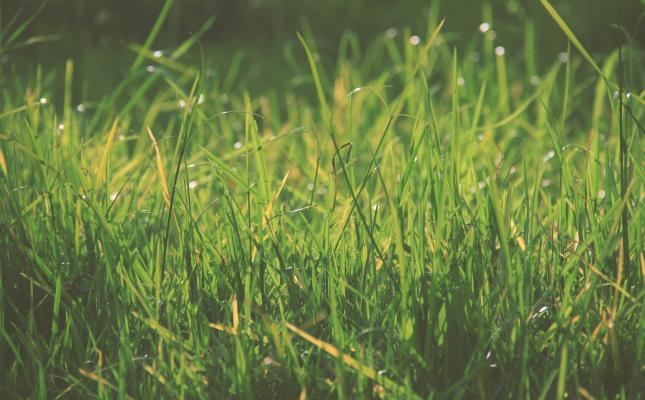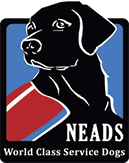Awareness of Dangerous Outdoor Toxins
Many of you know about the dangers of certain plants and mushrooms for your dogs. As you and your dog enjoy the weather and spend time outdoors and around the garden, here are some other dangerous toxins to be aware of. This is by no means a complete list but it’s a good start.
Pesticides – Pesticides are substances used to kill insects, rodents, and garden pests such as snails and slugs. Ingestion of pesticides especially if they contain organophosphates (often found in certain rose care products), can be life-threatening, even when ingested in small amounts. A study conducted over a six year period by the Cummings School of Veterinary Medicine at Tufts University showed that exposure to lawn pesticides, specifically those applied by professional lawn care companies, raised the risk of canine malignant lymphoma by as much as 70 percent. Chemicals in lawn care products have also been linked to bladder cancer in dogs.
Fertilizers – Most lawn fertilizers contain natural elements, however, they may also contain pesticides, herbicides or contain poisonous amounts of nitrogen, phosphorus, potassium, iron, or zinc. Keep dogs away from treated lawns at least until they are dry. Check the product packaging, though, since some products must be rinsed into the lawn before it is safe to walk on. Chemical-based lawn fertilizers with herbicides have shown to have a one-third greater risk of cancer from just one application a season.
- Bone Meal -While it makes a great organic fertilizer, it can become a problem when consumed. The bone meal can form a cement-like bone ball in the stomach – which can cause an obstruction in the gastrointestinal tract
- Blood meal: This is dried, ground, and flash-frozen blood and contains 12% nitrogen. While it’s a great organic fertilizer, if ingested, it can cause vomiting and diarrhea. More importantly, it can result in severe pancreatitis. Some types of blood meal are also fortified with iron, resulting in iron toxicity.
Slug and Snail Baits -Available in a variety of forms (pellets, granular, powder and liquid), slug and snail baits contain the active ingredient metaldehyde, which is highly poisonous to dogs.
Mulch Products – Cocoa mulch is made of discarded hulls or shells of the cocoa bean and combines the dangers of fertilizer and theobromine – the ingredient in chocolate that’s toxic to dogs. It also smells like chocolate which often attracts dogs and may encourage them to eat it. Many other varieties of mulch contain very low amounts of the toxins and are not as dangerous. Varieties with higher toxin concentrations can cause vomiting, diarrhea, hyperactivity, an abnormal heart rhythm, seizures and in extreme cases, death. Since it is not usually apparent how much of the toxin the mulch contains, it’s best to keep dogs a safe distance away, to always supervise your dog while outside, or to not use the mulch at all.
Mouse and rat poisons (rodenticides):
Currently there are four separate categories of rodenticides available for general use. They all work differently. This results in four different sets of clinical signs in the dogs who might consume them.
- Long-acting anticoagulants (LAACs): The most well-known and most widely used. This family of rodenticides works by causing internal bleeding and preventing the body from clotting normally. Fortunately, prescription-strength Vitamin K1, the antidote is found in most veterinary offices.
- Cholecalciferol (Vitamin D3): This is one of the most dangerous rat poisons. It increases calcium blood levels so high that it causes a secondary kidney failure. This type has no antidote and only a tiny amount needs to be ingested before it causes serious problems.
- Bromethalin: This rarer type of rat poison doesn’t have an antidote and results in brain swelling. If toxic amounts are ingested, we see clinical signs of walking drunk, tremoring, and seizuring.
- Phosphides: This is more commonly seen in mole and gopher poison. Phosphide rodenticides typically come in a poisoned “gummy worm” form that you put in the dirt. These types of phosphide poisons result in phosphine gas in the stomach, resulting in severe bloat, vomiting, abdominal pain, and potential lung and heart complications. Very little is needed to make your dog very sick.
Mothballs – Mothballs are pesticides that slowly release a gas vapor to kill and repel moths (and their larvae) as well as other insects. Mothballs come in cakes, scales, powder, balls, cubes, spheres, and flakes. The chemicals in mothballs can be inhaled, absorbed through the skin, or absorbed through the stomach and intestines. Dogs can ingest mothballs. Naphthalene mothballs are considered the most toxic type. Modern PDB mothballs are less toxic but still can cause illness, especially when ingested. Clinical signs of mothball poisoning include vomiting, mothball-scented breath, pale or brown gums, weakness or lethargy, difficulty breathing, tremors, seizures, and organ failure (e.g., liver, kidneys).
Compost bins or piles: Unless you are using compost bins, compost piles should always be fenced off. As the organic matter decomposes, it is common for molds to grow. Even small amounts of moldy food or compost ingested by a dog can result in sickness and physical distress in as little as 30 minutes or as long as several hours later. Symptoms include agitation, panting, drooling, vomiting, tremors and seizures.
Blue-green algae or Cyanobacteria: Cyanobacteria (also known as blue-green algae) are microscopic bacteria found in freshwater lakes, streams, and ponds which can produce dangerous toxins. Algae concentrations vary throughout the year, but are most common during periods of hot weather. While most blue-green algae blooms do not produce toxins, it is not possible to determine the presence of toxins without testing. Thus, all blooms should be considered potentially toxic. Affected water may have the appearance of pea soup with thick layers of algae on the surface. Exposures occur when dogs ingest or swim in water that contains the cyanobacteria. Clinical signs will differ depending on the type of toxin but can include vomiting, diarrhea, black stool, jaundice, seizures and difficulty breathing.Very small exposures, such a few mouthfuls of algae-contaminated water, may result in fatal poisoning.
Enjoy the great outdoors with your dog. Being aware of potential toxins in unfamiliar environments will help you to keep your dog safe.
NOTE: Information gathered from the following websites: petpoisonhelpline.com and pethealthnetwork.com.
-Ellen Jones

